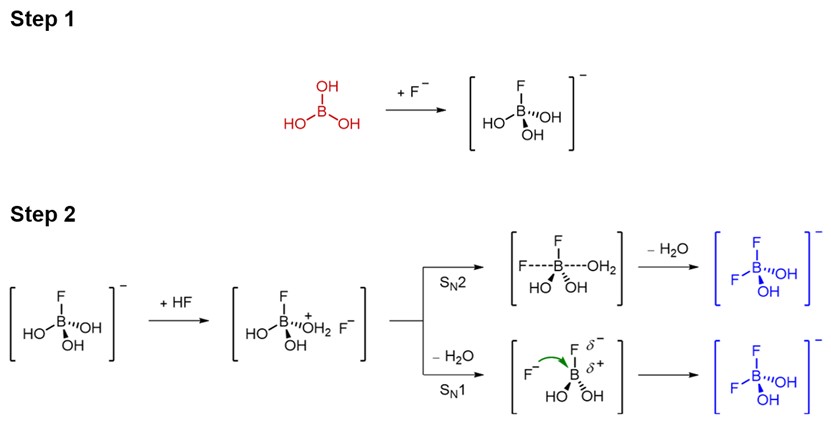Researchers propose a reaction pathway for the fluorinations under the Terahertz light
Editor: | Mar 07,2024
Fluorine is a distinctive element known for its capacity to form a vast array of compounds. These compounds play pivotal roles across diverse fields, including pharmaceuticals, agrochemicals, catalysis, and materials science. The extraordinary diversity of the fluorine compounds can be attributed primarily to fluorine's status as the element with the highest electronegativity, yet the lowest polarizability among all atoms, and the smallest radii among all non-noble-gas and non-hydrogen elements. Furthermore, the similar ionic radii between fluorine and oxygen facilitate their facile interchange. This interchangeability links the domains of fluorides and oxides/hydroxides, presenting opportunities to enhance the properties of these oxide/hydroxide materials by substituting fluorine for oxygen. It is wellestablished that such substitutions can induce significant alterations in various physical properties of materials, including changes in Curie temperatures in ferroelectric oxides, modification of the superconductive and magnetic properties of metal oxides, and enhancement of the performance of organocatalysis.
Despite the increasing impact of fluorination on inorganic oxides, the structure analysis of the reaction products poses a formidable challenge in fluorine chemistry. The similar scattering abilities of fluorine and oxygen to X-ray, electron, and neutron beams make the accurate differentiation of these atoms difficult.
Based on this, a research group led by Prof. Shilie Pan and Miriding Mutailipu at Xinjiang Technical Institute of Physics & Chemistry, Chinese Academy of Science, illustrated that terahertz (THz) spectroscopy provides a powerful tool for addressing this challenge. To this end, they investigated two fluorination reactions of boric acid, utilizing MHF2 (M=Na, C(NH2)3) as fluorine reagents. Through an interplay between THz spectroscopy and solid-state density functional theory, they have conclusively demonstrated that fluorine atoms exclusively bind with the sp3-boron but not with the sp2-boron in the reaction products of Na[B(OH)3][B3O3F2(OH)2] (NaBOFH) and [C(NH2)3]2B3O3F4OH (GBF2). Based on this evidence, they have proposed a reaction pathway for the fluorinations under investigation, a process previously hindered due to structural ambiguity. This work represents a step forward in gaining a deeper understanding of the precise structures and reaction mechanisms involved in the fluorination of oxides/hydroxides, illuminated by the insights provided by THz spectroscopy.
The paper was published on Angew. Chem. Int. Ed. 2024, 63, e202319121 with the title of “ Where do the Fluorine Atoms Go in the Inorganic-oxide Fluorinations? A Fluorooxoborate Illustration under the Terahertz Light”. This work was financially supported by National Key R&D Program of China, Young Elite Scientist Sponsorship Program by CAST, National Natural Science Foundation of China, and the West Light Foundation of CAS.
Author List: Chunjie Shen#, Feng Zhang#,*, Tetsuo Sasaki, Chaolu Eerdun, Michitoshi Hayashi, Houngwei Wang, Keisuke Tominaga, Miriding Mutailipu* and Shilie Pan*
Article Link: https://onlinelibrary.wiley.com/doi/10.1002/anie.202319121

Figure. Proposed reaction routes leading to the anion units of NaBOFH and GBF2.
附件下载:
 (86) 991-3838931
(86) 991-3838931 lhskj@ms.xjb.ac.cn
lhskj@ms.xjb.ac.cn (86)991-3838957
(86)991-3838957 40-1 Beijing Road
Urumqi, XinjiangChina
40-1 Beijing Road
Urumqi, XinjiangChina